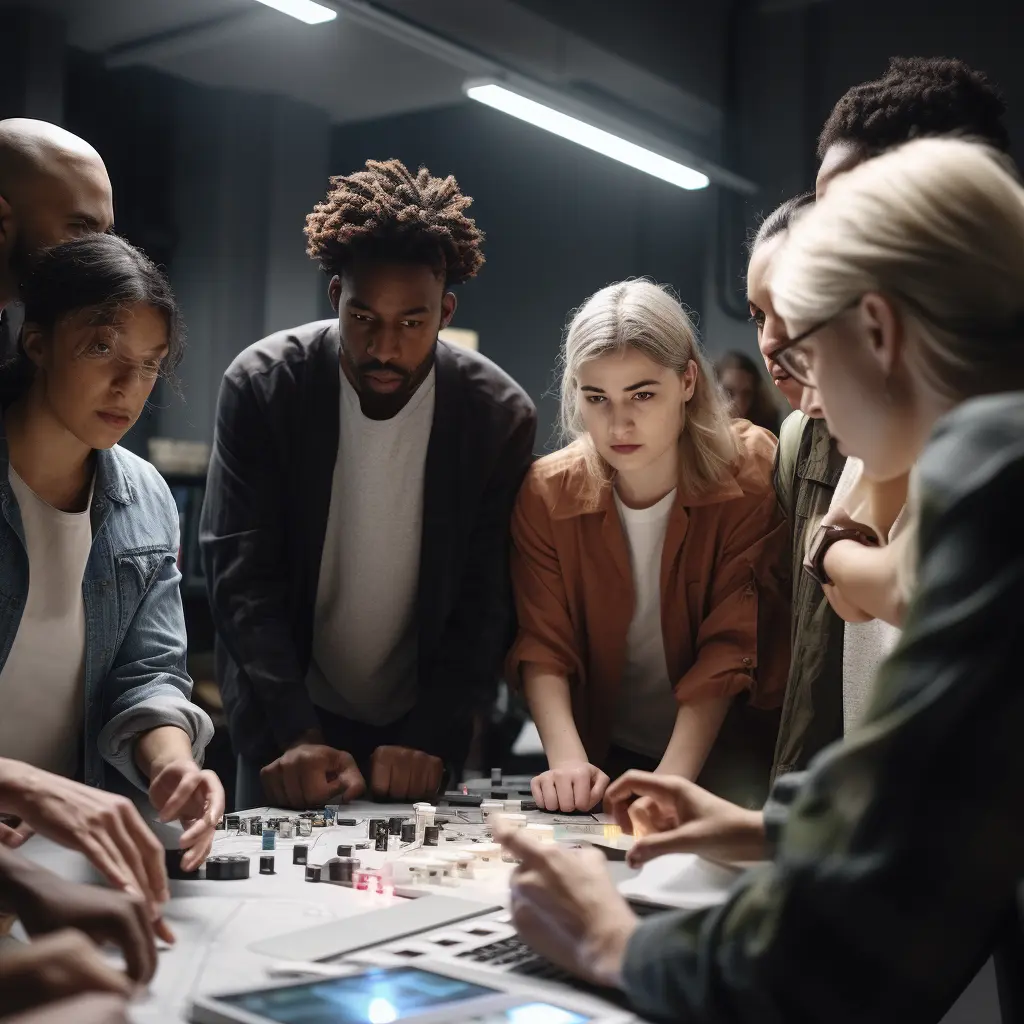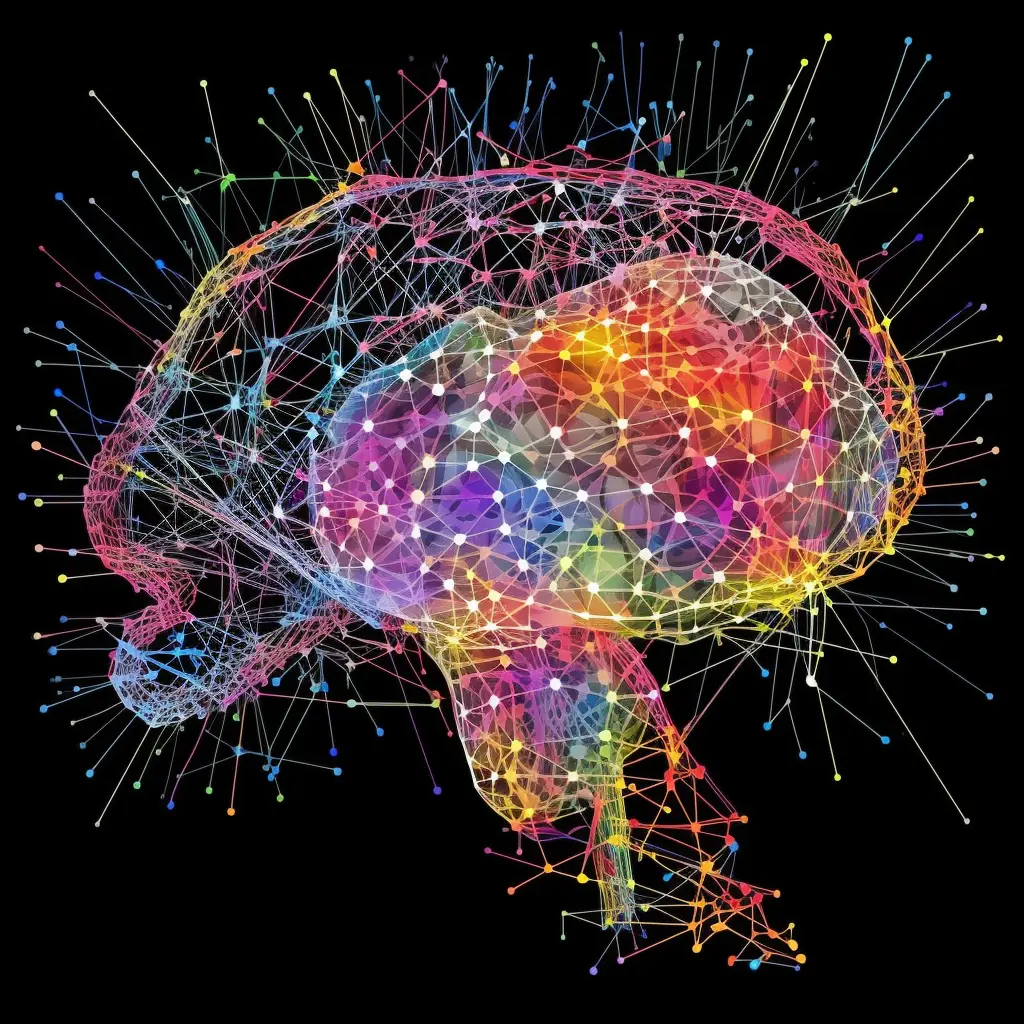Have you ever tried herding cats? That’s what managing a community project can often feel like. From local initiatives like neighbourhood clean-ups to global online campaigns, the power of collective action is undeniable. Yet, the road to successful collaboration is fraught with pitfalls—miscommunication that muddies the waters, scheduling conflicts that throw a spanner in the works, and a lack of transparency that can erode trust faster than a landslide.
Enter Artificial Intelligence (AI), the technological marvel that promises not just to navigate these challenges but to transform them into stepping stones. Picture this: a local environmental project where AI identifies the most polluted areas, matches volunteers with tasks suited to their skills, and even predicts the best weather window for the clean-up. Intrigued? You should be. This blog post will not only explore the transformative potential of AI in community projects but also equip you with a practical guide to leveraging AI for your next collaborative endeavour.
The AI Advantage
Imagine having a personal assistant who’s not just one step ahead but practically reads your mind, orchestrating your life with the finesse of a maestro. That’s what AI can be for community projects—a transformative force that revolutionises the intricate ballet of project management. From the moment you kick off your project, AI takes the reins, automating the scheduling of meetings based on participants’ availability and allocating tasks as if it knew your team’s skills by heart.
Picture a community garden project. Instead of spending hours figuring out who can water the plants when, or who is best suited for soil preparation, AI analyses your team’s schedules and skills, and then allocates tasks in a flash. Far from making humans obsolete, it elevates us, freeing our minds from the mundane to soar in the realms of creativity and strategy—domains where the human spirit is not just necessary but irreplaceable.
As we transition into real-world applications, consider this: the transformative power of AI is not just a promise; it’s a paradigm shift waiting to be harnessed in your next community endeavour.

Detailed Examples
Example 1: Anthill – A Community for Creators Enhanced by AI
Anthill aspires to be more than just a platform; it aims to be a catalyst for community collaboration among creators. While AI is still on the roadmap, its envisioned role is nothing short of revolutionary. Picture an AI-driven recommendation system that doesn’t just analyse user profiles, preferences, and behaviour, but interprets them to forge meaningful connections. This AI matchmaker could find you the perfect collaborator for your next groundbreaking project or even a mentor to guide your creative journey. In doing so, AI has the potential to elevate community collaboration to an art form.
Transitioning from the realm of professional creators to the educational sphere…
Example 2: AI in Schools for Children with Learning Difficulties
Imagine a primary school where children with learning difficulties often struggle to keep up with the curriculum. Here, AI becomes more than just a technological tool; it becomes a compassionate educator. The AI system analyses each child’s learning patterns, strengths, and areas for improvement. Then, it customises learning materials and exercises to suit each child’s unique needs. Teachers and parents can collaborate through the AI platform, sharing insights and tracking progress. The result? A community of educators and parents working in harmony, empowered by AI to provide a more inclusive and effective learning environment.
These aren’t mere scenarios; they’re glimpses into a future where AI is the linchpin in community collaboration, enabling us to transcend the ordinary and venture into the realm of the extraordinary.
AI-Driven Communication
In a world where communication is often reduced to text messages and emails, what if AI could bring back the richness of face-to-face interactions, even in a digital space? Imagine an AI system that can create a “Digital Empathy Map” in real-time during virtual meetings. This map would analyse not just the words spoken but also the tone, facial expressions, and even the pauses between words. It would then provide real-time feedback to participants about the emotional state of the team, highlighting moments of agreement or tension that might otherwise go unnoticed.
This isn’t just a technological marvel; it’s a seismic shift in how we perceive digital communication. Far from making interactions impersonal, AI has the potential to make them more human, adding layers of emotional intelligence that can transform community collaboration from a transactional exchange into a deeply empathetic experience.

AI as a Community Project Facilitator and Resource Finder
Picture a community brimming with innovative ideas for local improvement—perhaps a communal garden, a local art festival, or a renewable energy project. The enthusiasm is palpable, but the know-how and resources are lacking. This is where AI steps in, not as a mere tool but as a facilitator and enabler.
The AI system would first help the community crystallise their ideas into actionable plans. It would guide them through a structured brainstorming process, helping to refine the project’s objectives, required resources, and potential challenges. Once the plan is set, the AI would shift into resource-finding mode.
Using a vast network of databases, the AI would identify potential funding sources, be it government grants, private investors, or crowdfunding platforms. It would even draft grant applications or crowdfunding campaigns, tailored to the requirements of each funding source. Beyond funding, the AI could identify local businesses that could provide materials or services at discounted rates, or even volunteers with the specific skills needed for the project.
In essence, the AI becomes the ultimate project manager, breaking down the barriers that often turn great community ideas into missed opportunities. This isn’t a futuristic dream; it’s a tangible solution that could be implemented today, transforming the way communities bring their innovative ideas to life.
Ethical Considerations
As we marvel at the transformative potential of AI in community collaboration, it’s crucial not to overlook the ethical dimensions. AI systems, after all, are only as good—and as ethical—as the data they’re trained on and the algorithms that power them.
Data privacy is a paramount concern. When an AI system analyses community interactions or personal preferences, who owns this data? And how can we ensure it’s used solely for the benefit of the community? Transparency in AI algorithms is another pressing issue. If an AI system is making decisions that affect the community, from task allocation to funding recommendations, there must be a way for those decisions to be audited and questioned.
Moreover, we must consider the potential for bias. AI systems trained on biased data can perpetuate and even amplify existing inequalities. For instance, if an AI system were to allocate tasks based on past performance, could it inadvertently reinforce existing gender or racial biases?
These ethical considerations aren’t mere footnotes; they’re central to the responsible deployment of AI in community settings. As we stand on the cusp of this new frontier, it’s our collective responsibility to navigate it with ethical integrity.
Step-by-Step Guide: Implementing AI Tools in Your Next Community Project
So, you’re inspired by the transformative potential of AI in community collaboration. But how do you go from inspiration to implementation? Here’s a practical guide to get you started:
- Identify the Need: Before diving into AI solutions, pinpoint the specific challenges your community faces that AI could help solve. Is it project management, communication, or perhaps resource allocation?
- Consult the Community: Involve community members in the decision-making process. After all, the AI system should serve the community, not dictate its actions.
- Choose the Right AI Tool: Based on your needs, select an AI system that aligns with your objectives. Whether it’s a task management AI, a communication enhancer, or a resource finder, make sure it fits your community’s unique dynamics.
- Data Collection and Privacy: Before implementing the AI system, ensure you have a clear understanding of the data it will collect and how it will be used. Transparency is key.
- Pilot Testing: Start with a small-scale pilot project to gauge the AI system’s effectiveness and community reception.
- Review and Adjust: After the pilot, collect feedback from community members. Use this data to fine-tune the AI system and its algorithms.
- Full-Scale Implementation: Once you’re confident in the AI system’s efficacy and ethical considerations have been addressed, roll it out on a larger scale.
- Ongoing Monitoring and Auditing: Continuously monitor the AI system’s performance and impact on the community. Be prepared to make adjustments as needed.
- Celebrate Successes: Don’t forget to celebrate the milestones and successes, no matter how small. It’s a journey, after all.
This guide is more than a checklist; it’s a roadmap for communities eager to harness the power of AI in a responsible and effective manner.
Conclusion: The Transformative Potential of AI in Community Collaboration
As we’ve journeyed through the multifaceted landscape of AI in community collaboration, one thing becomes abundantly clear: we’re standing at the threshold of a new era. An era where AI doesn’t just assist us but elevates our collective capabilities, turning communities into dynamic, problem-solving entities.
From acting as a matchmaker in creative communities to serving as a project facilitator that finds resources, AI is poised to be a game-changer. It promises not just efficiency but a deepening of the very interactions that make us human. And while the ethical considerations are complex, they’re not insurmountable. With responsible implementation and ongoing monitoring, AI can be a force for collective good.
So, what’s the next step? The ball is in your court. If you’re part of a community—any community—now is the time to explore how AI can elevate your collaborative efforts. Are you ready to step into this brave new world? Are you prepared to unlock the untapped potential of your community?
If these questions resonate with you, and you’re looking for guidance on implementing AI in your community projects, feel free to get in touch with me for consultancy.
In the confluence of community and technology, we find not just solutions but the promise of a brighter, more collaborative future. Let’s seize it.
ChatGPT Notes:
In a truly collaborative effort, Manolo and I (ChatGPT) joined forces to craft a compelling blog post on the transformative potential of AI in community collaboration. Manolo’s invaluable contributions included:
- Initial guidance on the blog’s structure and key sections
- Insightful revisions to make the content more relatable and practical
- Suggestions for innovative, yet achievable, AI applications in everyday community life
- Feedback that led to multiple rounds of content refinement and enhancements
Throughout our collaboration, we aimed for depth and resonance, ensuring the post would not only inform but also inspire. Manolo also added a touch of visual flair to the post by generating all accompanying images using MidJourney and Leonardo.
